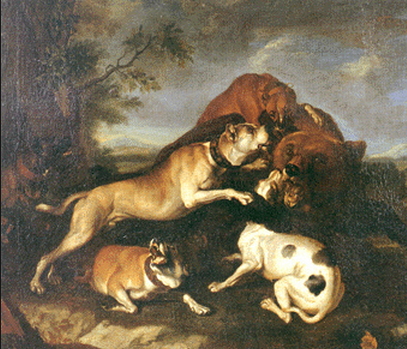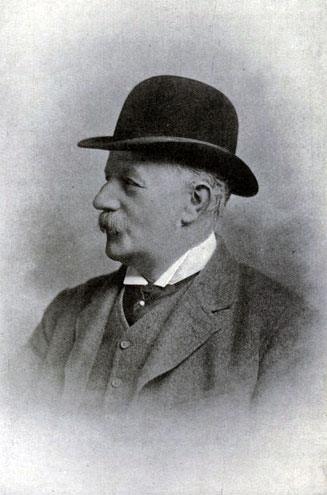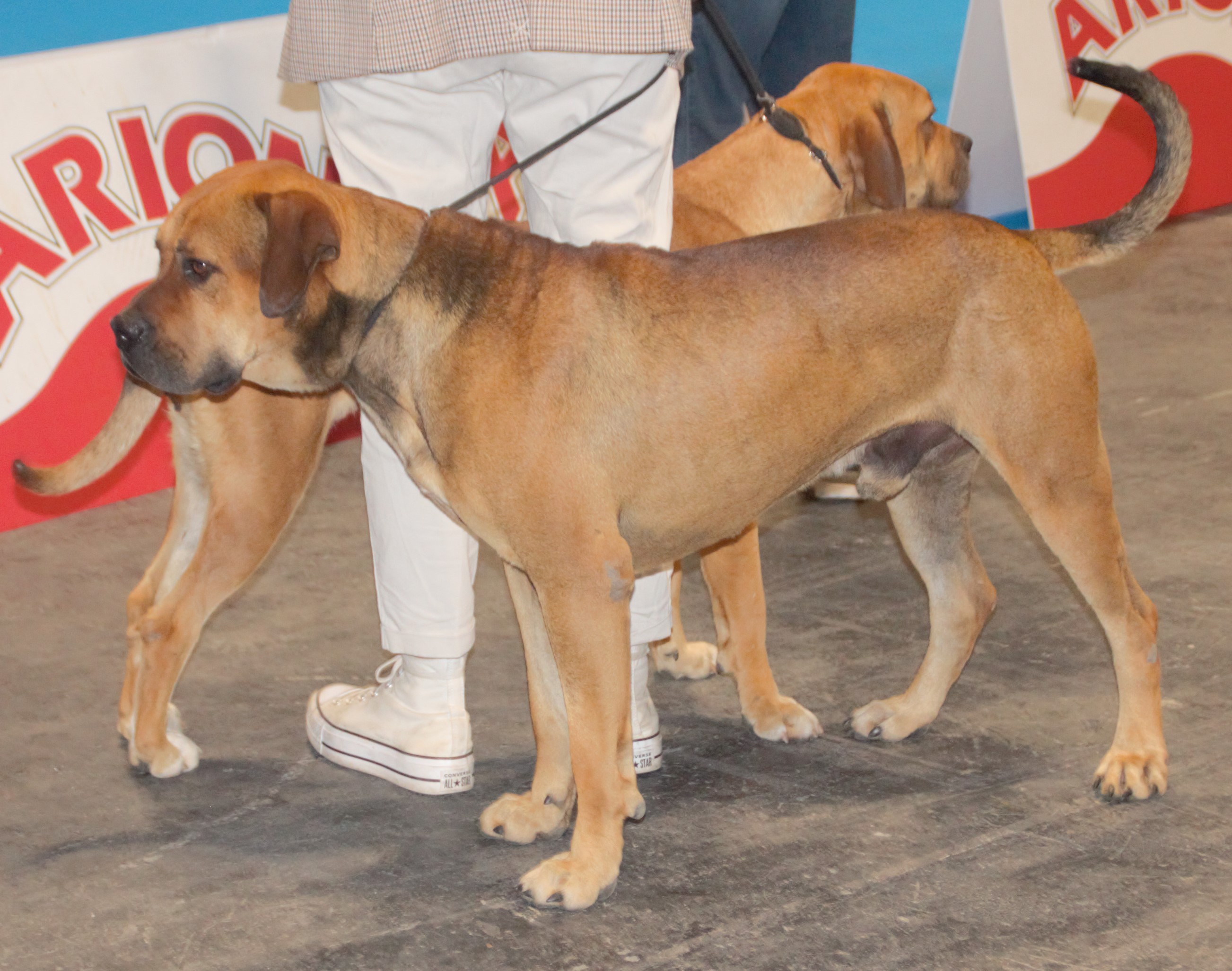|
English Mastiff
The English Mastiff, or simply the Mastiff, is a British list of dog breeds, breed of very large dog of mastiff type. It is likely descended from the ancient Alaunt and Pugnaces Britanniae, with a significant input from the Alpine Mastiff in the 19th century. Distinguished by its enormous size, massive head, short coat in a limited range of colours, and always displaying a black mask, the Mastiff is noted for its gentle and loving nature. The lineage of modern dogs can be traced back to the early 19th century, but the modern type was stabilised in the 1880s and refined since. Following a period of sharp decline, the Mastiff has increased its worldwide popularity. Throughout its history the Mastiff has contributed to the development of a number of dog breeds, some generally known as Mastiff, mastiff-type dogs or, confusingly, just as "mastiffs". It is the largest living Caninae, canine, outweighing the wolf by up to 50 kg (110 lbs) on average. History Ancien ... [...More Info...] [...Related Items...] OR: [Wikipedia] [Google] [Baidu] |
The Kennel Club
The Royal Kennel Club (KC) is the official kennel club of the United Kingdom. It is the oldest recognised kennel club in the world. Its role is to oversee various canine activities including dog shows, dog agility and working trials. It also operates the national register of pedigree dogs in the United Kingdom and acts as a lobby group on issues involving dogs in the UK. To celebrate its 150th anniversary on 5 April 2023, King Charles III confirmed the club with a 'royal' prefix. The Kennel Club has four principal physical locations. Its headquarters are on Clarges Street in Mayfair, London, incorporating a private members' club (with bar, lounge, and dining facilities), meeting and conference rooms, art gallery, library, picture library, and a residential apartment for the use of the Chairman. A second site at Aylesbury, Buckinghamshire, houses the administrative offices, and charitable trust headquarters. The third site is Stoneleigh Park in Warwickshire, where the Kenn ... [...More Info...] [...Related Items...] OR: [Wikipedia] [Google] [Baidu] |
Mastiff Champion Beaufort
A mastiff is a large and powerful Dog type, type of dog. Mastiffs are among the largest dogs, and typically have a short Coat (dog), coat, a long low-set tail and large feet; the skull is large and bulky, the muzzle broad and short (brachycephalic) and the ears drooping and pendant-shaped. European and Asian records dating back 3,000 years show dogs of the mastiff type. Mastiffs have historically been guard dogs, protecting homes and property, although throughout history they have been used as hunting dogs, war dogs and for blood sports, such as dog fighting, fighting each other and other animals, including bulls, bears, and even lions. History Historical and archaeological evidence suggests that mastiffs have long been distinct in both form and function from the similarly large livestock guardian dogs from which they were most likely developed; they also form separate genetic populations. The Fédération Cynologique Internationale and some kennel clubs group the two types toget ... [...More Info...] [...Related Items...] OR: [Wikipedia] [Google] [Baidu] |
War Dog
Dogs have a very long history in warfare, beginning in ancient times. From being trained in combat, to their use as scouts, sentries, messengers, mercy dogs, and trackers, their uses have been varied, and some continue to exist in modern military usage. History War dogs were used by the Egyptians, Greeks, Persians, Sarmatians, Baganda, Alans, Slavs, Britons, and Romans. Among the Greeks and Romans, dogs served most often as sentries or patrols, though they were sometimes taken into battle. The earliest use of war dogs in a battle recorded in classical sources was by Alyattes of Lydia against the Cimmerians around 600 BC. The Lydian dogs killed some invaders and routed others. At the Battle of Pelusium (525 BC), Cambyses II deployed dogs, cats, and other animals held sacred by the Egyptians. By putting these animals on the front lines, he was supposedly able to get the Egyptians to cease using their projectile weaponry. During the Late Antiquity, Attila the Hun us ... [...More Info...] [...Related Items...] OR: [Wikipedia] [Google] [Baidu] |
Celts
The Celts ( , see Names of the Celts#Pronunciation, pronunciation for different usages) or Celtic peoples ( ) were a collection of Indo-European languages, Indo-European peoples. "The Celts, an ancient Indo-European people, reached the apogee of their influence and territorial expansion during the 4th century BC, extending across the length of Europe from Britain to Asia Minor."; . "[T]he Celts, were Indo-Europeans, a fact that explains a certain compatibility between Celtic, Roman, and Germanic mythology."; . "The Celts and Germans were two Indo-European groups whose civilizations had some common characteristics."; . "Celts and Germans were of course derived from the same Indo-European stock."; . "Celt, also spelled Kelt, Latin Celta, plural Celtae, a member of an early Indo-European people who from the 2nd millennium bce to the 1st century bce spread over much of Europe." in Europe and Anatolia, identified by their use of Celtic languages and other cultural similarities.. "C ... [...More Info...] [...Related Items...] OR: [Wikipedia] [Google] [Baidu] |
Game (food)
Game or quarry is any wild animal hunted for animal products (primarily meat), for recreation (" sporting"), or for trophies. The species of animals hunted as game varies in different parts of the world and by different local jurisdictions, though most are terrestrial mammals and birds. Fish caught non- commercially (recreational fishing) are also referred to as game fish. By continent and region The range of animal species hunted by humans varies in different parts of the world. This is influenced by climate, faunal diversity, popular taste and locally accepted views about what can or cannot be legitimately hunted. Sometimes a distinction is also made between varieties and breeds of a particular animal, such as wild turkey and domestic turkey. The flesh of the animal, when butchered for consumption, is often described as having a "gamey" flavour. This difference in taste can be attributed to the natural diet of the animal, which usually results in a lower fat conte ... [...More Info...] [...Related Items...] OR: [Wikipedia] [Google] [Baidu] |
Strabo
Strabo''Strabo'' (meaning "squinty", as in strabismus) was a term employed by the Romans for anyone whose eyes were distorted or deformed. The father of Pompey was called "Gnaeus Pompeius Strabo, Pompeius Strabo". A native of Sicily so clear-sighted that he could see things at great distance as if they were nearby was also called "Strabo". (; ''Strábōn''; 64 or 63 BC) was an ancient Greece, ancient Greek geographer who lived in Anatolia, Asia Minor during the transitional period of the Roman Republic into the Roman Empire. He is best known for his work ''Geographica'', which presented a descriptive history of people and places from different regions of the world known during his lifetime. Additionally, Strabo authored historical works, but only fragments and quotations of these survive in the writings of other authors. Early life Strabo was born to an affluent family from Amasya, Amaseia in Kingdom of Pontus, Pontus in around 64BC. His family had been involved in politics s ... [...More Info...] [...Related Items...] OR: [Wikipedia] [Google] [Baidu] |
Mars (mythology)
In ancient Roman religion and Roman mythology, mythology, Mars (, ) is the god of war and also an Roman agriculture, agricultural guardian, a combination characteristic of early ancient Rome, Rome. He is the son of Jupiter (mythology), Jupiter and Juno (mythology), Juno, and was pre-eminent among the Religion in the Roman military, Roman army's military gods. Most of his Roman festivals, festivals were held in March, the month named for him (Martius (month), Latin ''Martius''), and in October, the months which traditionally began and ended the season for both military campaigning and farming. Under the Hellenization, influence of Greek culture, Mars was interpretatio graeca, identified with the Greek mythology, Greek god Ares,''Larousse Desk Reference Encyclopedia'', The Book People, Haydock, 1995, p. 215. whose myths were reinterpreted in Latin literature, Roman literature and Roman art, art under the name of Mars. The character and dignity of Mars differs in fundamental ways fr ... [...More Info...] [...Related Items...] OR: [Wikipedia] [Google] [Baidu] |
Molossus (dog)
The Molossus (), also known as the Molossian hound and Epirus mastiff, is an extinct dog breed from Ancient Greece. History The Molossus were dogs that were kept by the ancient Greek tribe and kingdom of the Molossians, who inhabited the region of Epirus. The Molossus were famous throughout the ancient world for their size and ferocity and were frequently mentioned in ancient literature, including the writings of Aristophanes, Aristotle, Grattius, Horace, Lucan, Lucretius, Martial, Nemesianus, Oppian of Apamea, Plautus, Seneca, Statius, Ovid, and Virgil. The Molossians issued silver coinage with an image of a Molossus as their emblem. It is sometimes stated in books and magazines, particularly in Continental Europe and North America, that all mastiff-type dogs are descended from the Molossus. This theory states that the breed's progenitors arrived in Molossia from Asia and were eventually discovered by the Romans who employed large numbers as guards for the Roman Army; this th ... [...More Info...] [...Related Items...] OR: [Wikipedia] [Google] [Baidu] |
Ancient Greece
Ancient Greece () was a northeastern Mediterranean civilization, existing from the Greek Dark Ages of the 12th–9th centuries BC to the end of classical antiquity (), that comprised a loose collection of culturally and linguistically related city-states and communities. Prior to the Roman period, most of these regions were officially unified only once under the Kingdom of Macedon from 338 to 323 BC. In Western history, the era of classical antiquity was immediately followed by the Early Middle Ages and the Byzantine period. Three centuries after the decline of Mycenaean Greece during the Bronze Age collapse, Greek urban poleis began to form in the 8th century BC, ushering in the Archaic period and the colonization of the Mediterranean Basin. This was followed by the age of Classical Greece, from the Greco-Persian Wars to the death of Alexander the Great in 323 BC, and which included the Golden Age of Athens and the Peloponnesian War. The u ... [...More Info...] [...Related Items...] OR: [Wikipedia] [Google] [Baidu] |
Grattius
Grattius (or Gratius) Faliscus was a Latin poetry, Roman poet who flourished during the life of Augustus (63 BC – 14 AD). He is known as the author of a ''Cynegetica'', a poem on hunting. Life The only reference to Grattius in any extant ancient writer is a passing reference in Ovid, ''Ex Ponto'': :''Tityrus antiquas et erat qui pasceret herbas Aptaque venanti Gratius arma daret.'' Some lines by Marcus Manilius, Manilius have been supposed to allude to Grattius, but the terms in which they are expressed are too vague to warrant such a conclusion. According to Johann Christian Wernsdorf, who argued from the name, he must have been a slave or a freedman. The cognomen, or epithet, Faliscus, from which it has been inferred that he was a native of Falerii was first introduced by Barth, on the authority of a manuscript which no one else ever saw, and probably originated in a forced interpretation of one of the lines in the poem, "At contra nostris imbellia lina Faliscis" (5.40). Wil ... [...More Info...] [...Related Items...] OR: [Wikipedia] [Google] [Baidu] |
Ancient Rome
In modern historiography, ancient Rome is the Roman people, Roman civilisation from the founding of Rome, founding of the Italian city of Rome in the 8th century BC to the Fall of the Western Roman Empire, collapse of the Western Roman Empire in the 5th century AD. It encompasses the Roman Kingdom (753–509 BC), the Roman Republic (50927 BC), and the Roman Empire (27 BC476 AD) until the fall of the western empire. Ancient Rome began as an Italic peoples, Italic settlement, traditionally dated to 753 BC, beside the River Tiber in the Italian peninsula. The settlement grew into the city and polity of Rome, and came to control its neighbours through a combination of treaties and military strength. It eventually controlled the Italian Peninsula, assimilating the Greece, Greek culture of southern Italy (Magna Graecia) and the Etruscans, Etruscan culture, and then became the dominant power in the Mediterranean region and parts of Europe. At its hei ... [...More Info...] [...Related Items...] OR: [Wikipedia] [Google] [Baidu] |
Roman Conquest Of Britain
The Roman conquest of Britain was the Roman Empire's conquest of most of the island of Great Britain, Britain, which was inhabited by the Celtic Britons. It began in earnest in AD 43 under Emperor Claudius, and was largely completed in the southern half of Britain (most of what is now called England and Wales) by AD 87, when the Stanegate was established. The conquered territory became the Roman Roman Britain, province of Britannia. Following Julius Caesar's invasions of Britain in 54 BC, some southern British chiefdoms had become Roman client kingdoms in Britain, allies of the Romans. The exile of their ally Verica gave the Romans a pretext for invasion. The Roman army was recruited in Roman Italy, Italia, Hispania, and Gaul and used the newly-formed fleet ''Classis Britannica''. Under their general Aulus Plautius, the Romans pushed inland from the southeast, defeating the Britons in the Battle of the Medway. By AD 47, the Romans held the lands southeast of the Fosse Way. ... [...More Info...] [...Related Items...] OR: [Wikipedia] [Google] [Baidu] |









